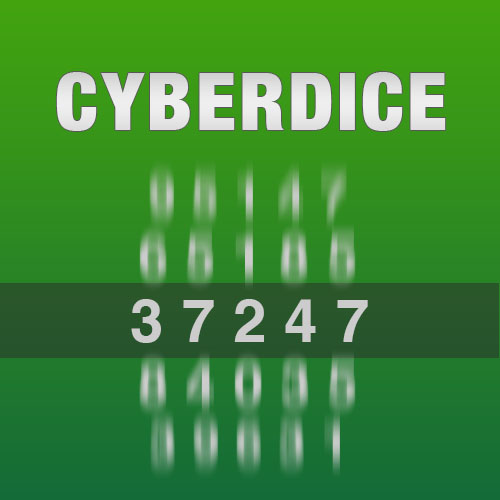- Games
-
Dice
-
CyberDice
-
Keno
-
Limbo
-
Quests
- Finance
- Cashier
- Exchanger
- Faucet
- VIP Club
- Affiliate
- Daily reward
- Services
- From $0.63 / month VPN service
- Profile & Settings
- My profile
- Settings
- Other
- Verifier
- FAQ
- Live Support
- Telegram channel
- Telegram group
Bitcoin (BTC) information

Bitcoin (BTC) Logo
Understanding Bitcoin
Bitcoin (BTC) is a type of cryptocurrency, or virtual currency, designed to serve as a form of money and a method of payment, independent from any specific individual, group, or organization. This aspect eliminates the necessity for third-party participation in financial dealings. It's rewarded to blockchain miners for their work in verifying transactions and can also be acquired on various exchanges.
The public first became aware of Bitcoin in 2009 when it was launched by an unknown individual or group operating under the pseudonym Satoshi Nakamoto.
Since its inception, Bitcoin has grown to be the most recognized cryptocurrency globally. Its fame has spurred the creation of numerous other cryptocurrencies. These new entrants either strive to surpass Bitcoin as a payment system or are utilized as utility or security tokens within different blockchains and novel financial technologies.
Expand your knowledge about the first cryptocurrency ever—its backstory, how it operates, ways to acquire it, and its potential uses.
MAIN POINTS
- Introduced in 2009, Bitcoin has become the world's most valuable cryptocurrency in terms of market capitalization.
- Contrary to traditional fiat currency, Bitcoin is generated, dispersed, traded, and stored using a decentralized record system referred to as a blockchain.
- Bitcoin's ledger and the cryptocurrency itself are safeguarded by a proof-of-work (PoW) consensus, which is the very "mining" process that injects new bitcoins into the system.
- Bitcoin can be acquired through a range of cryptocurrency exchanges.
- Bitcoin's past as a value reservoir has been volatile, experiencing several periods of explosive growth and severe contraction throughout its comparatively brief existence.
- As the inaugural decentralized digital currency to gain broad recognition and success, Bitcoin has triggered the development of numerous other cryptocurrencies following its model.
Deciphering Bitcoin
In August 2008, the domain Bitcoin.org was officially registered. As of now, this domain is protected by WhoisGuard, which means the identity of the person who registered it remains undisclosed to the public.
In October of the same year, an individual or group operating under the pseudonym Satoshi Nakamoto posted on the Cryptography Mailing List at metzdowd.com, saying, "I've been working on a new electronic cash system that's fully peer-to-peer, with no trusted third party." This seminal white paper, which was subsequently published on Bitcoin.org under the title "Bitcoin: A Peer-to-Peer Electronic Cash System," essentially serves as the foundational blueprint for Bitcoin's operation today.
The inaugural Bitcoin block, known as Block 0 or the "genesis block," was mined on January 3, 2009. It contains the text: "The Times 03/Jan/2009 Chancellor on brink of second bailout for banks," potentially suggesting the block was mined on or after this date and perhaps offering poignant political commentary. This was according to Bitcoin.com's article, "10 Years Ago Bitcoin's Genesis Block Changed the Course of History."
The reward for Bitcoin mining is halved for every 210,000 blocks mined. For instance, the reward for each block mined was initially set at 50 bitcoins in 2009. The latest halving, which happened on May 11, 2020, decreased the reward to 6.25 bitcoins per block.
A single bitcoin is divisible up to eight decimal places (100 millionths of one bitcoin), with the smallest unit referred to as a satoshi. If needed, and provided the participating miners consent to the change, Bitcoin's divisibility could potentially be extended to even more decimal places.
Understanding Bitcoin as a digital currency isn't overly complex. For instance, if you possess a bitcoin, you can utilize your cryptocurrency wallet to dispatch fractions of that bitcoin in exchange for goods or services. However, comprehending the intricacies of how it operates can prove to be considerably more complex.
Decoding Bitcoin's Blockchain Technology
Cryptocurrencies operate on a technology known as blockchain, which is essentially a distributed ledger or shared database that holds data. This data within the blockchain is safeguarded by encryption techniques.
A transaction occurring on the blockchain involves copying data from the previous block into a new block along with the new transaction data. This data is then encrypted, and the transaction is validated by network validators, also known as miners. Upon verification of a transaction, a new block is initiated, a Bitcoin is generated, and this Bitcoin is then awarded to the miner or miners who validated the data within the block. They can then utilize, store, or trade this Bitcoin as they see fit.
Bitcoin employs the SHA-256 hashing algorithm for the encryption of data stored within the blockchain's blocks. In simple terms, transaction data placed in a block is transformed into a 256-bit hexadecimal number through encryption. This number embodies all transaction data and information associated with the preceding blocks.
The interlinking of data between blocks is what inspired the term 'blockchain'.
Transactions are lined up in a queue awaiting validation by the network's miners. All miners within the Bitcoin blockchain network strive to authenticate the same transaction at the same time. The mining software and hardware endeavor to solve the nonce, a four-byte number present in the block header that miners are trying to decipher.
The block header undergoes hashing, or repeated random regeneration by a miner, until it aligns with a target number determined by the blockchain. Once the block header is "solved," a new block is formed to accommodate further transactions for encryption and verification.
The Process of Mining Bitcoin
There's a broad range of hardware and software that can be utilized for Bitcoin mining. Initially, when Bitcoin was just released, one could mine it competitively using a personal computer. However, as its popularity grew and more miners joined the network, the odds of being the first to solve the hash diminished. While you can still mine with a personal computer equipped with recent hardware, the likelihood of individually solving a hash is incredibly slim.
This reduced probability is due to the competition with a network of miners that collectively generate around 220 quintillion hashes (220 exa hashes) per second. Specialized machines known as Application Specific Integrated Circuits (ASICs), designed specifically for mining, can generate approximately 255 trillion hashes per second. In comparison, a computer with state-of-the-art hardware can only hash around 100 mega hashes per second (100 million).
If you're aiming to become a successful Bitcoin miner, there are several strategies you can employ. You can repurpose your existing personal computer, install Bitcoin-compatible mining software, and join a mining pool. Mining pools are groups of miners who pool their computational resources to compete against large ASIC mining farms.
Joining a pool enhances your chances of receiving a reward, although the rewards are typically smaller as they are distributed among all pool members.
Alternatively, if your budget allows, you could invest in an ASIC miner. New ones are usually priced around $20,000, but used units are also available as miners upgrade their systems. However, there are significant ongoing costs such as electricity and cooling to consider if you purchase one or more ASICs.
Numerous mining programs are available to choose from, and there are many pools you can join. CGMiner and BFGMiner are two of the more well-known programs. When deciding on a pool, it's vital to understand their payout structure, potential fees, and look for mining pool reviews.
The Process of Acquiring Bitcoin
If you're not interested in mining Bitcoin, you can acquire it via a cryptocurrency exchange. Given its value, most people are unlikely to purchase an entire Bitcoin but can buy fractions of it on these exchanges using fiat currency, such as U.S. dollars. For instance, Bitcoin can be purchased on Coinbase by setting up an account and funding it. This account can be funded using a bank account, credit card, or debit card. The following video provides further explanation on purchasing Bitcoin.
What Are the Applications of Bitcoin?
Originally, Bitcoin was developed and launched as a peer-to-peer payment system. However, its applications have expanded due to its increasing value and the emergence of competitive blockchains and cryptocurrencies.
Making Payments
To utilize your Bitcoin, you need to possess a cryptocurrency wallet. These wallets hold the private keys to your Bitcoin, which must be entered whenever you conduct a transaction. Many merchants, retailers, and stores accept Bitcoin as a form of payment for goods and services.
Physical stores that accept cryptocurrencies typically display a sign indicating "Bitcoin Accepted Here." Transactions can be processed via the necessary hardware terminal or wallet address using QR codes and touchscreen apps. An online business can effortlessly incorporate Bitcoin as a payment method alongside other online payment options such as credit cards and PayPal.
Understanding the Timeline and Prospects of Bitcoin Mining
On average, it takes about 10 minutes for the mining network to authenticate a block and generate the associated reward. The current Bitcoin reward is 6.25 BTC per block. This roughly translates to about 100 seconds required to mine 1 BTC.
Is Investing in Bitcoin a Wise Decision?
Bitcoin's investment history is relatively brief and characterized by significant price volatility. Whether it serves as a good investment depends on several factors, such as your financial profile, investment portfolio, risk tolerance, and investment objectives. Before making any investments in cryptocurrency, it's always advisable to seek counsel from a financial professional to ensure it aligns with your personal circumstances.
How Does Bitcoin Generate Revenue?
The network of Bitcoin miners earns money from Bitcoin by successfully validating blocks and earning the corresponding rewards. Bitcoins can be exchanged for traditional fiat currencies via cryptocurrency exchanges and used for purchasing goods from merchants and retailers that accept them. Additionally, investors and speculators can generate profits from trading bitcoins.
What Is the Value of Bitcoin in U.S. Dollars?
As of Nov. 22, 2022, the value of $1 Bitcoin equates to $15,766 U.S. dollars.
How Many Bitcoins Remain?
As of Nov. 22, 2022, there are 19,214,106.25 Bitcoins currently in circulation. The number of Bitcoins yet to be mined is 1,785,893.8.
Final Thoughts
Introduced as the inaugural cryptocurrency, Bitcoin was designed to function as a means of payment beyond legal tender. Since its inception in 2009, Bitcoin has witnessed a surge in popularity and broadening of its applications, giving rise to an array of competing cryptocurrencies.
While the process of producing Bitcoin is intricate, investing in it is comparatively straightforward. Investors and speculators can engage in buying and selling Bitcoin via cryptocurrency exchanges. Like any investment, especially one as novel and volatile as Bitcoin, investors should thoroughly assess if Bitcoin aligns with their investment strategy.
Investing in cryptocurrencies and Initial Coin Offerings (ICOs) carries a high level of risk and unpredictability, and this article should not be interpreted as an endorsement by LuckyDiamond or the author to invest in such assets. Given the unique financial circumstances of each individual, it is advisable to consult a proficient professional before making any financial commitments. LuckyDiamond does not guarantee the accuracy or the timeliness of the information provided in this article.
Games where you can win  Bitcoin (BTC):
Bitcoin (BTC):
Loading





